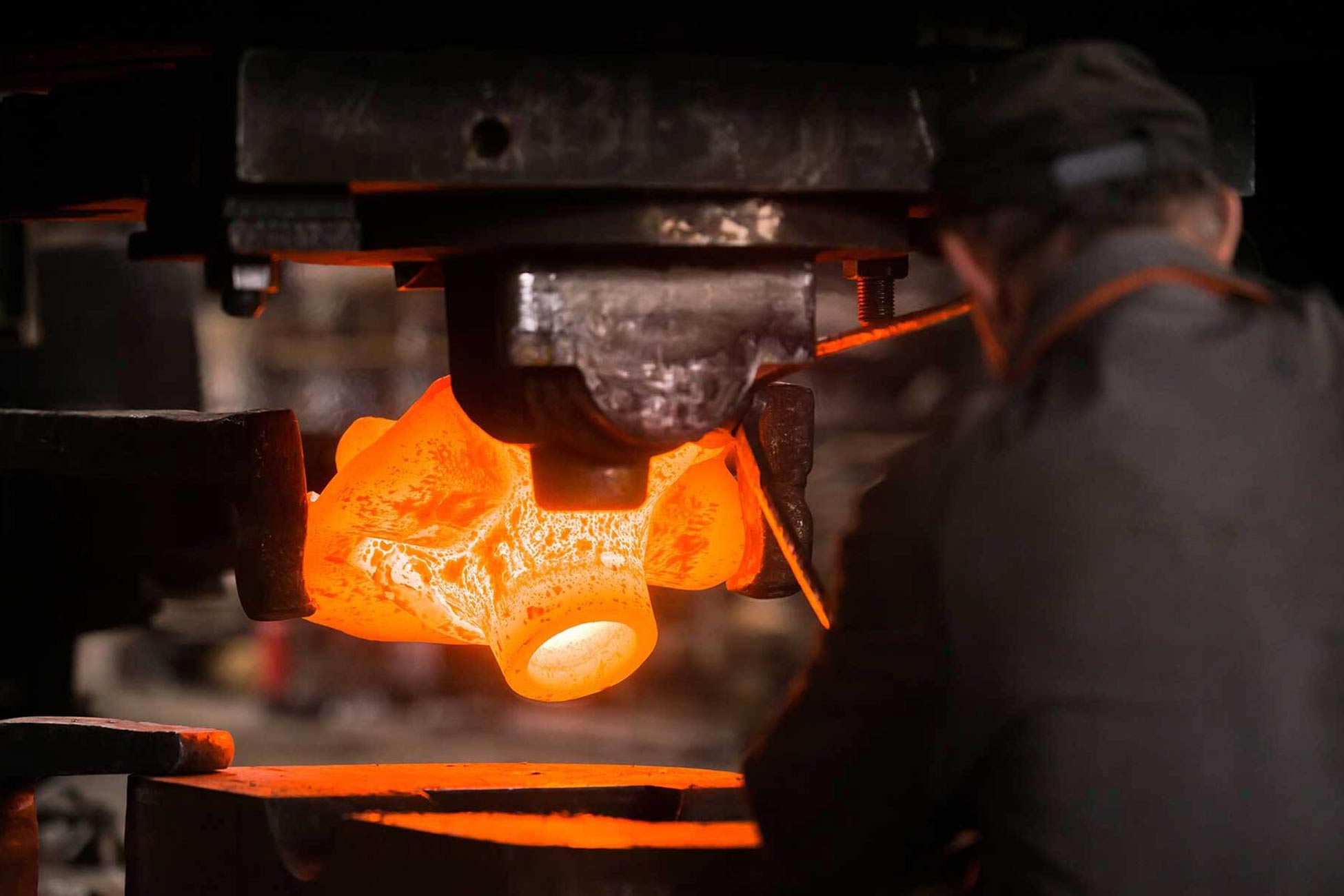
Forging is a metal processing method that involves heating metal to a plastic state and then shaping it into the desired form by applying force. Here are some common forging process types and their applications for different parts and requirements:

Also known as free forging, it involves deforming metal in unrestricted dies to form parts. This method is suitable for large and heavy parts like ship components, bearings, and mining machinery. Open die forging is often used in applications requiring high strength and wear resistance.
Forging is done between two dies with predetermined contours to fill the die cavities. Closed die forging is used for producing complex-shaped and smaller-sized parts such as automotive components, aerospace parts, and industrial tools. It provides higher manufacturing precision and a more compact structure.
A forging process conducted at room temperature, typically suitable for parts with simple geometric shapes. Cold forging can increase material strength and is applicable for producing components like bolts, nuts, and rivets with simple shapes, reducing the need for subsequent heat treatment.
A forging process conducted at high temperatures when the metal is in a plastic state. Hot forging reduces metal hardness, enhances deformability, and is widely used in industries such as automotive, aerospace, and petrochemicals for producing engine components, aircraft parts, and pipeline flanges. It lowers deformation resistance at high temperatures, improving production efficiency.
Metal is extruded through a die with a predetermined shape to form the required cross-section and shape. This is commonly used for producing long or tubular parts such as aluminum profiles and copper tubes. Extrusion forging is suitable for simpler cross-sectional shapes.
Involves axially advancing a metal rod or tube to reduce its diameter or adjust its cross-sectional shape. Swaging is commonly used for producing slender cylindrical parts like metal tubes, shafts, and pins, altering the metal's cross-sectional shape and size.
Utilizes friction-induced heating between two surfaces in relative motion, followed by plastic deformation under pressure. This method is employed in producing high-temperature alloy parts, such as aerospace engine components and nuclear power equipment. Friction forging achieves efficient heating and plastic deformation.
Utilizes electromagnetic induction to generate current and a magnetic field to heat the metal, followed by deformation under force. This forging method is suitable for producing high-precision and high-quality components like precision mechanical parts and power equipment. Electromagnetic forging is often used in applications requiring precise temperature and shape control.
The choice of forging process depends on the specific application, manufacturing requirements, part shape, size, and material. If you have any requirements for forged parts or fluid control valves, feel free to contact us.